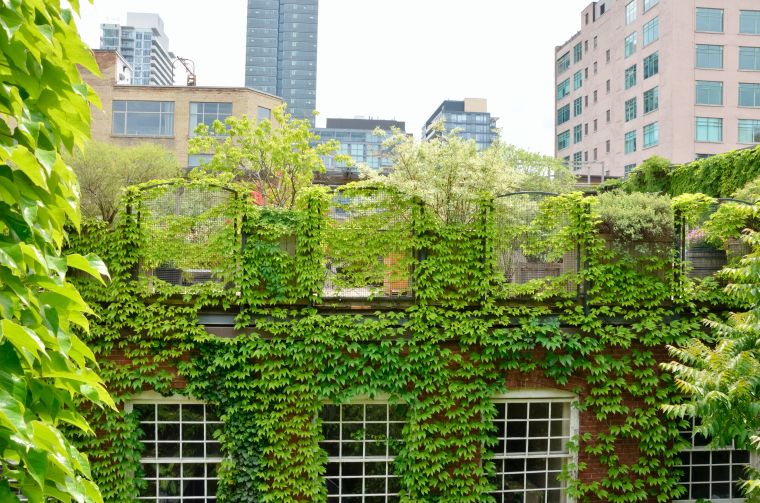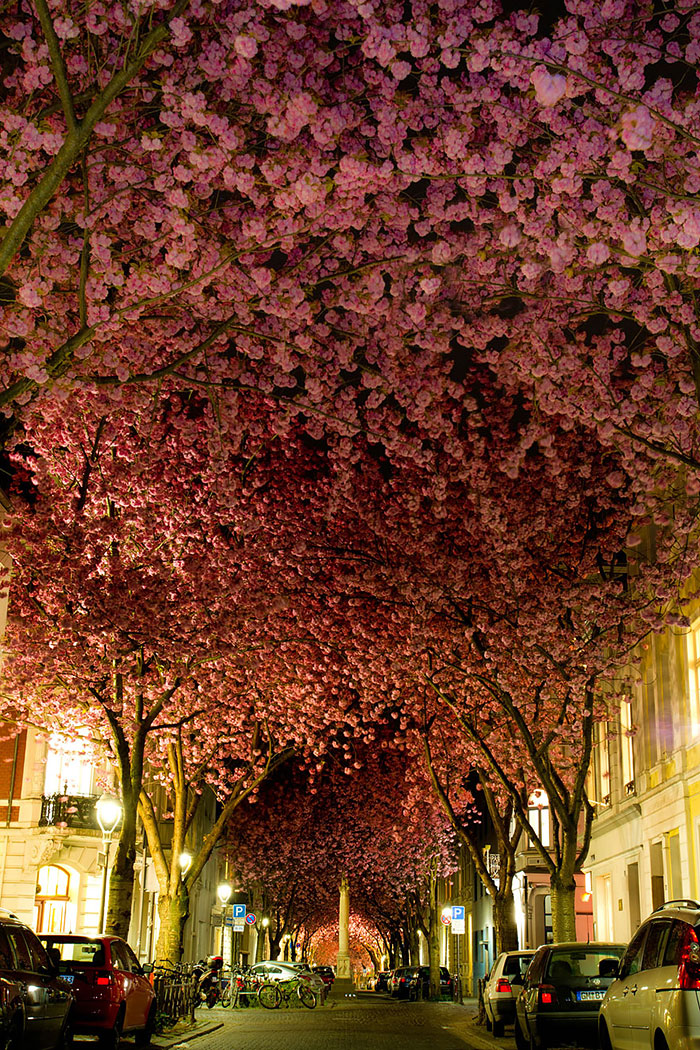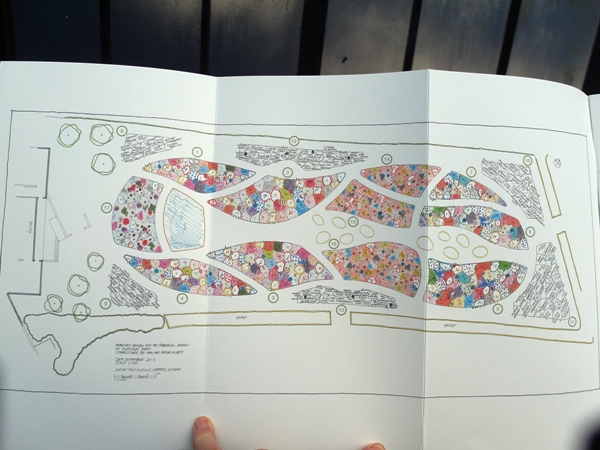Category: Urban Gardens
Pretty Excited to Nuture Leaf Mold This Year
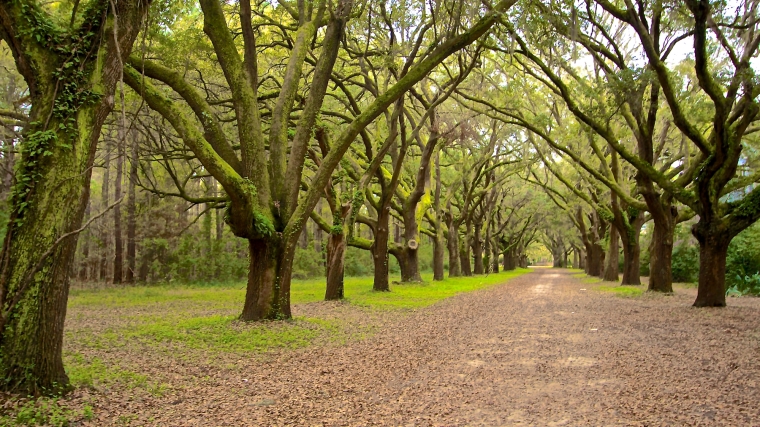 So many folks in my neighborhood (Zone 8b) spend quite a lot of electricity and/or gasoline getting their fallen leaves in bags and onto the street curb these days. Not a lot of analog rake noises abound. And, here in my native deep South, the Live Oaks are the cause of so much local activity.
So many folks in my neighborhood (Zone 8b) spend quite a lot of electricity and/or gasoline getting their fallen leaves in bags and onto the street curb these days. Not a lot of analog rake noises abound. And, here in my native deep South, the Live Oaks are the cause of so much local activity.
This candid culprit makes no apologies as it delivers a raucous leaf explosion this time of year. We love them so much whilst they herald the first day of Spring for us by shedding almost every dang brown leaf they have on board. With this kind of flotsam in an Oak lined drive….well, I get excited about the fallen leaves. They are so full of Nitrogen. Click here and here for all the great news!
World’s Most Coveted Walks (or Drives).
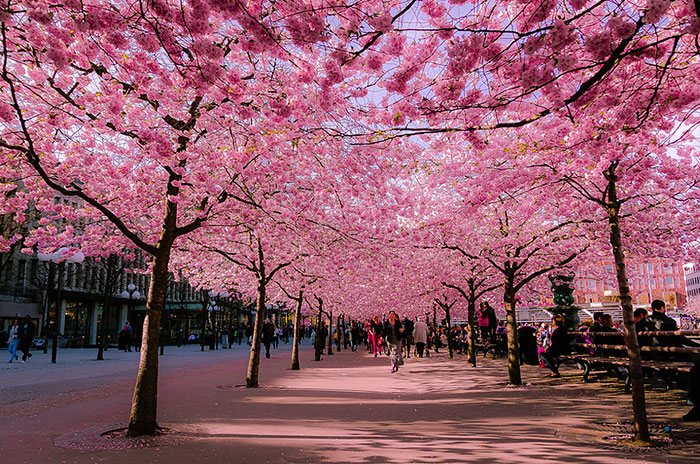 Thank you so much to a good friend, Nicky Stolker, of Amsterdam that alerted me to this visual column. What else can you say, but, “WOW, WOW.”
Thank you so much to a good friend, Nicky Stolker, of Amsterdam that alerted me to this visual column. What else can you say, but, “WOW, WOW.”
My Ongoing Affair With Piet Oudolf
Sometimes I declare out loud that my first Dutch love was Oudolf. And, of course, he SHOULD be everyone’s secret sharer as he plants his way into the hearts of all those who adore good design and their hometown, Planet Earth. The Dutch never cease to amaze me and I miss them very much but this man is one of their most important national treasures. Here is an article on his latest projects….Alstublieft!
Hedging The Bet-ter Part of Your Privacy
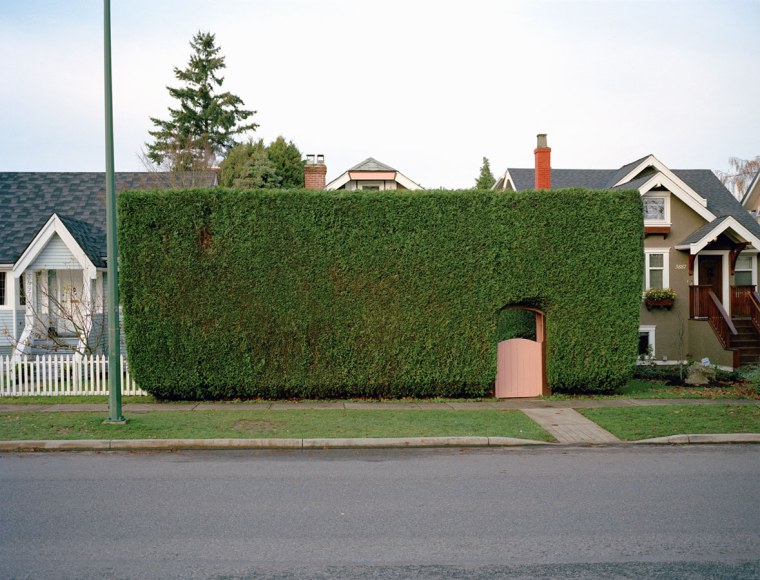
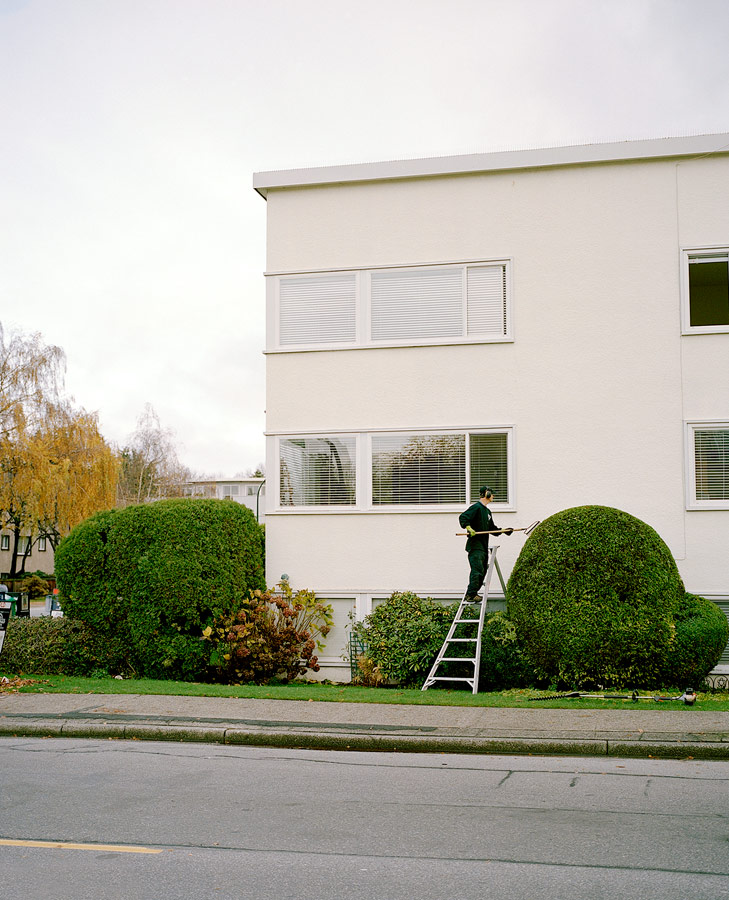
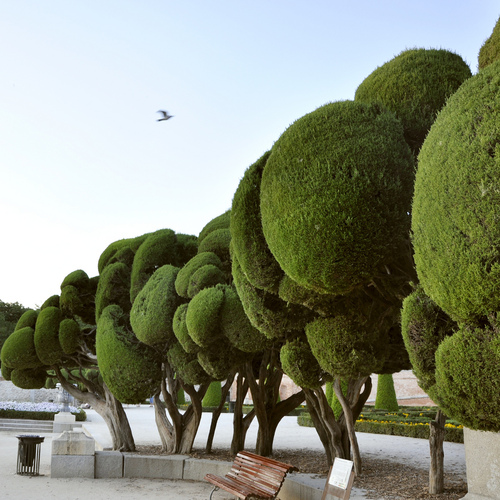 I fully intend to wall in my urban/suburban house this year! These are GREAT ideas because while adding privacy to life inside, they add public beauty and sculpture to the landscape.
I fully intend to wall in my urban/suburban house this year! These are GREAT ideas because while adding privacy to life inside, they add public beauty and sculpture to the landscape.
Tea Party In Tokyo
 I have been travelling around Asia lately photographing gardens. The Japanese take the cake in the 21st century for their style And, the 4th. And, the 14th. They essentially have three types of gardens, most of the influences begins in 400AD with Buddha and they continued to finesse until the 14th century. Karesansui Gardens, or Zen Gardens as we refer to them in the West, are the dry gardens that are abstractions…the box of sand with rocks and the rake, you might recall? These are for meditation. And, of course they exist not only in the miniature you are familiar with. Tsukiyama Gardens are the style that really makes the gardeners of the East famous with the gardeners of the West. These are the majestic sculpted gardens. I will talk more of these later as I have visited one of the style in Tokyo. And, finally, Chaniwa Gardens. Tea Party Gardens. The fountain above is typical and the visitor is to cleanse his hands before partaking in the sacred green Tea Party. The fountain is followed by lanterns and the lanterns light a path and the path leads to a tea house that is generally kept amongst the flora and out of site. These are the gardens that support the Western decorations of towers of cemented lanterns and fountains and such that are curiosities of our garden supply shops. In Charleston, South Carolina we have many formal gardens that have such accoutrement in them. The Tea Party was all the rave in the colonies, brought to America vis a vis the Dutch who colonized New Amsterdam (New York). The Dutch had the most magnificent Eastern trade on the ocean and brought with them the tea. Think about a serene scene and not these very, very misguided and embarrassing rallies that are going on across the United States today. The influence of the Japanese Tea Garden is one of my favorites: peace and harmony in the pretty garden.
I have been travelling around Asia lately photographing gardens. The Japanese take the cake in the 21st century for their style And, the 4th. And, the 14th. They essentially have three types of gardens, most of the influences begins in 400AD with Buddha and they continued to finesse until the 14th century. Karesansui Gardens, or Zen Gardens as we refer to them in the West, are the dry gardens that are abstractions…the box of sand with rocks and the rake, you might recall? These are for meditation. And, of course they exist not only in the miniature you are familiar with. Tsukiyama Gardens are the style that really makes the gardeners of the East famous with the gardeners of the West. These are the majestic sculpted gardens. I will talk more of these later as I have visited one of the style in Tokyo. And, finally, Chaniwa Gardens. Tea Party Gardens. The fountain above is typical and the visitor is to cleanse his hands before partaking in the sacred green Tea Party. The fountain is followed by lanterns and the lanterns light a path and the path leads to a tea house that is generally kept amongst the flora and out of site. These are the gardens that support the Western decorations of towers of cemented lanterns and fountains and such that are curiosities of our garden supply shops. In Charleston, South Carolina we have many formal gardens that have such accoutrement in them. The Tea Party was all the rave in the colonies, brought to America vis a vis the Dutch who colonized New Amsterdam (New York). The Dutch had the most magnificent Eastern trade on the ocean and brought with them the tea. Think about a serene scene and not these very, very misguided and embarrassing rallies that are going on across the United States today. The influence of the Japanese Tea Garden is one of my favorites: peace and harmony in the pretty garden.
Thanks For Waiting!
 I killed my Mac and had to go to the above photographed store in order to correct my conundrum! Pretty slick, huh? Something about the hyper-white modernity with the Palmetto tree stage right makes me want to go back for more accessories. Palmettos, or Sabal majors, are tap-rooters and can do well (or, at least, fine) planted right next to the sidewalk in front of a Mac store, even. Though, the state tree of South Carolina would probably rather be out on an abandoned, protected barrier island. They are not so native of our downtown principality. But, we love them so. And, you just cannot get out of the town council meeting without someone suggesting that we plant more down the sidewalk! Bless their tap-roots.
I killed my Mac and had to go to the above photographed store in order to correct my conundrum! Pretty slick, huh? Something about the hyper-white modernity with the Palmetto tree stage right makes me want to go back for more accessories. Palmettos, or Sabal majors, are tap-rooters and can do well (or, at least, fine) planted right next to the sidewalk in front of a Mac store, even. Though, the state tree of South Carolina would probably rather be out on an abandoned, protected barrier island. They are not so native of our downtown principality. But, we love them so. And, you just cannot get out of the town council meeting without someone suggesting that we plant more down the sidewalk! Bless their tap-roots.
My Garden Underway
 Before
Before Underway
Underway
Well, it’s getting there. Suddenly, I can’t wait for Spring.
Modernity In A Water Feature
 Today I just like this pond. It is so simple in scheme and modern in idea, yet, evokes timeless emotions of the river’s edge. How soothing it must be to live in this room. The landscape architect, Stephen Woodhams, in London, captured the essence of rural privacy and balled it into an urban setting. (And, of course, I don’t mind the topiaries to the right, either!) I found this photo in the book, Small Space Gardens, by David Stevens.
Today I just like this pond. It is so simple in scheme and modern in idea, yet, evokes timeless emotions of the river’s edge. How soothing it must be to live in this room. The landscape architect, Stephen Woodhams, in London, captured the essence of rural privacy and balled it into an urban setting. (And, of course, I don’t mind the topiaries to the right, either!) I found this photo in the book, Small Space Gardens, by David Stevens.
Keeping Birds II
 Keeping two geese in an average suburban and urban yard is a cinch…I kept two Peking Ducks in my garden in the middle of West Hollywood for many years. They are happiest with one other feathered kind so they know who to follow around and they spend all the day waddling from plant to plant eating bugs. They are delightful to watch. If you have a water feature in your garden, then bonus for them! Otherwise just keep fresh water around and feed them some bread and duck food from the local feed and seed (just like having a dog.) Their poop is rich in nutrients (unlike a dog) that are beneficial to your soil. Just mind, and put the little guys away in their coop at night. You may have to herd them in, but, once they get to know their home, they will know where to go. You should stow them away at evening, because, birds of prey, even in Hollywood, can stalk them at night. Nothing fancy is necessary, see above.
Keeping two geese in an average suburban and urban yard is a cinch…I kept two Peking Ducks in my garden in the middle of West Hollywood for many years. They are happiest with one other feathered kind so they know who to follow around and they spend all the day waddling from plant to plant eating bugs. They are delightful to watch. If you have a water feature in your garden, then bonus for them! Otherwise just keep fresh water around and feed them some bread and duck food from the local feed and seed (just like having a dog.) Their poop is rich in nutrients (unlike a dog) that are beneficial to your soil. Just mind, and put the little guys away in their coop at night. You may have to herd them in, but, once they get to know their home, they will know where to go. You should stow them away at evening, because, birds of prey, even in Hollywood, can stalk them at night. Nothing fancy is necessary, see above.
I Love Terrariums
 I have always loved watching the sprout grow. When I was a little kid, I would plant beans just for the satiation of quick impact, and, today I am still planting these for instant gratification. This photograph is by me and what I have done with Goodwill glass jars and Rye Grass seed in my potting shed. Rye Grass takes about one week to get to this point. Don’t water too much, as the terrariums maintain their own humidity levels without your help. Just give them a little drink when you seed – then put the lid on and place in indirect sunlight (a sunny window sill is perfect). You will notice the beads of water forming around the glass making and the fogging it takes for the plant life to live in these pretty little things.
I have always loved watching the sprout grow. When I was a little kid, I would plant beans just for the satiation of quick impact, and, today I am still planting these for instant gratification. This photograph is by me and what I have done with Goodwill glass jars and Rye Grass seed in my potting shed. Rye Grass takes about one week to get to this point. Don’t water too much, as the terrariums maintain their own humidity levels without your help. Just give them a little drink when you seed – then put the lid on and place in indirect sunlight (a sunny window sill is perfect). You will notice the beads of water forming around the glass making and the fogging it takes for the plant life to live in these pretty little things.
Forced Bulbs and the Minimalist Gardener
 I just love this shot from Pure Style by Jane Cumberbatch (photograph by Henry Bourne)Forcing bulbs is as easy as storing your film. You put them in the refrigerator. I can’t imagine not having a bunch of medium format film stock and crocus and hyacinth bulbs in there. Just leave the bulbs in for 4 to 6 weeks and then plant them in a pot of soil…fertilize with compost that is nitrogen rich and voila!you can achieve garden stardom. (It’s true that bulbs and orchids seem to mystify.) And, bulbs can be modern and minimal and will thrive in any sort of container because they are short cycled. So you can be really creative with your styles of containers and have bulbs year round.
I just love this shot from Pure Style by Jane Cumberbatch (photograph by Henry Bourne)Forcing bulbs is as easy as storing your film. You put them in the refrigerator. I can’t imagine not having a bunch of medium format film stock and crocus and hyacinth bulbs in there. Just leave the bulbs in for 4 to 6 weeks and then plant them in a pot of soil…fertilize with compost that is nitrogen rich and voila!you can achieve garden stardom. (It’s true that bulbs and orchids seem to mystify.) And, bulbs can be modern and minimal and will thrive in any sort of container because they are short cycled. So you can be really creative with your styles of containers and have bulbs year round.
Cozy Little Gardens

 These are great for inspiration…small porches and terraces abound and I just love the bamboo garden. Bamboo creates spaces and walls on it’s own and can make you feel protected and private, quickly, given it’s growth habits. If you are worried about bamboo growing too much, then make sure you choose a clumping variety rather than a runner. Simple as that.
These are great for inspiration…small porches and terraces abound and I just love the bamboo garden. Bamboo creates spaces and walls on it’s own and can make you feel protected and private, quickly, given it’s growth habits. If you are worried about bamboo growing too much, then make sure you choose a clumping variety rather than a runner. Simple as that.
Rubber Pots
 These are smart looking pots and a great way to recycle, too. Find these online or in New York at Design Within Reach.
These are smart looking pots and a great way to recycle, too. Find these online or in New York at Design Within Reach.
Grasses, Reeds and Rushes: Chic
 If you have a thing for cleanliness in your environment, then, a non-shedding breed of dog (they exist!) and a super-duper chic collection of grasses is a fabulous idea for your surroundings. Is this not the neatest terrace? Works like crazy in narrow spaces where a savvy plank path dominates the way. The grasses soften the hard edges you build creating such a t-square environment. Add English pea gravel and make a layer of pale, minimal texture that reflects the sun in a sumptuous way (bright white in the afternoon to pale pink at sunset and light indigo at twilght.) And, just wait for the effect of the breeze. It is awesome. Did you notice I used the adjective minimal, again? I’ll return to the perfect cottage garden later, I promise.
If you have a thing for cleanliness in your environment, then, a non-shedding breed of dog (they exist!) and a super-duper chic collection of grasses is a fabulous idea for your surroundings. Is this not the neatest terrace? Works like crazy in narrow spaces where a savvy plank path dominates the way. The grasses soften the hard edges you build creating such a t-square environment. Add English pea gravel and make a layer of pale, minimal texture that reflects the sun in a sumptuous way (bright white in the afternoon to pale pink at sunset and light indigo at twilght.) And, just wait for the effect of the breeze. It is awesome. Did you notice I used the adjective minimal, again? I’ll return to the perfect cottage garden later, I promise. Grasses have quite a lot of motion in nature, whether on your portico or in a field, and they are dynamic in their change of colors with the seasons. These are not your average, invasive pampas grasses, either.
Grasses have quite a lot of motion in nature, whether on your portico or in a field, and they are dynamic in their change of colors with the seasons. These are not your average, invasive pampas grasses, either.
Even In A Concrete Jungle…
Visiting Botanical Gardens

 Every chance I get, I go to visit the nearest Botanical Garden in my travels. This photo of Agave is from the Tuscon Botanical Gardens. I have been, not once, but twice (which is a lot considering it is 2000 miles away from home). Twice, because, the succulents are something worth studying as we move into a sustainable future. And, Tuscon’s Garden is quite a lesson in all types and shapes and blooms and colors. It is quite a beautiful place. The roses in this post are from the New York Botanical. All I can say about the Peggy Rockefeller Rose Garden is WOW! Sure smells good. New York’s Garden is on an amazing 250 acres in the Bronx. Probably our country’s crowning jewel.
Every chance I get, I go to visit the nearest Botanical Garden in my travels. This photo of Agave is from the Tuscon Botanical Gardens. I have been, not once, but twice (which is a lot considering it is 2000 miles away from home). Twice, because, the succulents are something worth studying as we move into a sustainable future. And, Tuscon’s Garden is quite a lesson in all types and shapes and blooms and colors. It is quite a beautiful place. The roses in this post are from the New York Botanical. All I can say about the Peggy Rockefeller Rose Garden is WOW! Sure smells good. New York’s Garden is on an amazing 250 acres in the Bronx. Probably our country’s crowning jewel.
Brackpool Bench
Urban Walls and the Edible Landscape

 The area that I live in is an historical one…one of the original 13 colonies, even. We have a lot of old and impressive masonry walls dating from the 19th century that are in gardens, churchyards, graveyards and grocery store parking lots. And, quite a number of our backyards are 20′ x 30′, if you are lucky. Add an 8′ wall to the scene and it gives most home owners the impression of no space for a vegetable garden. I love these photos because they highlight the use of space for planting a garden. The masonry wall makes a great backdrop for chard, and collard greens, and chives. Plant delicates that need afternoon shade on the east side. The edible landscape is a beautiful one. Notice the “squash box?”
The area that I live in is an historical one…one of the original 13 colonies, even. We have a lot of old and impressive masonry walls dating from the 19th century that are in gardens, churchyards, graveyards and grocery store parking lots. And, quite a number of our backyards are 20′ x 30′, if you are lucky. Add an 8′ wall to the scene and it gives most home owners the impression of no space for a vegetable garden. I love these photos because they highlight the use of space for planting a garden. The masonry wall makes a great backdrop for chard, and collard greens, and chives. Plant delicates that need afternoon shade on the east side. The edible landscape is a beautiful one. Notice the “squash box?”
Sprout’s New Arrivals
 I just loves, loves this super clean shape. I want to plant it with something that doesn’t trail, but has a fluffy side…not to detract from the object d’art…..like young dutch lavender and hang it over the farm table…either in the kitchen or on the patio.
I just loves, loves this super clean shape. I want to plant it with something that doesn’t trail, but has a fluffy side…not to detract from the object d’art…..like young dutch lavender and hang it over the farm table…either in the kitchen or on the patio.
Absolutely LA….Absolutely Melrose
 This is Inner Gardens. They are fantastic at topiaries. Don’t forget to visit their warehouse off Jefferson, when you are done with the Melrose showroom. It is full of more great stuff.
This is Inner Gardens. They are fantastic at topiaries. Don’t forget to visit their warehouse off Jefferson, when you are done with the Melrose showroom. It is full of more great stuff.
Something great for Violets…
 Violets don’t like to touch terra cotta because there is too much saline in their (terra cotta’s) make-up: so the leaves will turn brown if they rest around the rim….give them this home and they will go green green green! You can purchase this great find at GRDN: For the Urban Gardener in Brooklyn.
Violets don’t like to touch terra cotta because there is too much saline in their (terra cotta’s) make-up: so the leaves will turn brown if they rest around the rim….give them this home and they will go green green green! You can purchase this great find at GRDN: For the Urban Gardener in Brooklyn.


